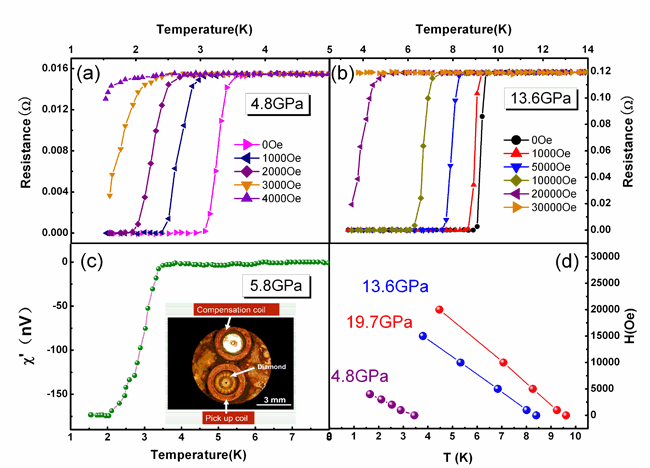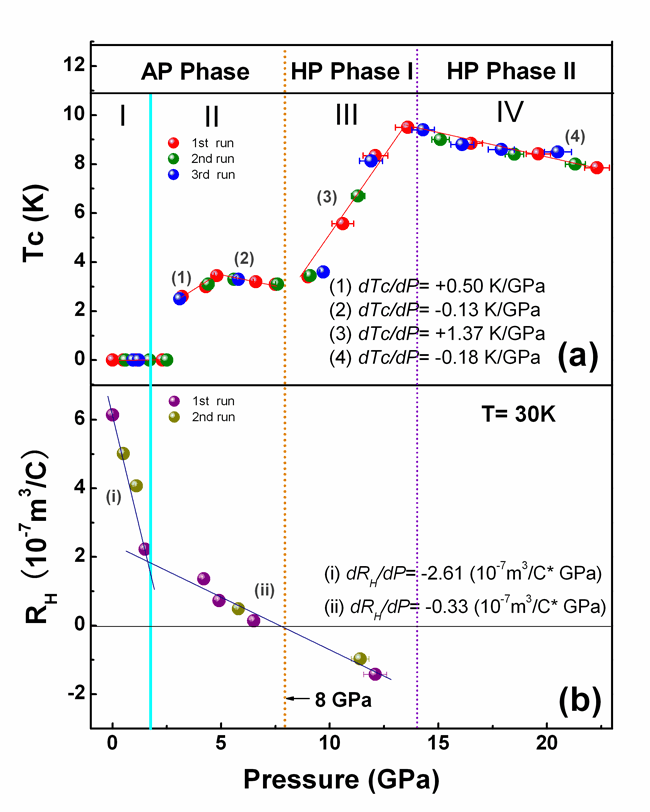Ordinary metals conduct electrons all the way through, whereas ordinary insulators do not conduct electrons at all. The topological insulators represent a new state of matter that the bulk is insulating while the surface is conducting. One of the exciting proposals is the suggestion to induce superconductivity in the surface state of the topological insulators which could create Majorana state. The state has a potential application in topological quantum computing. The topological superconductors, which are superconducting in the bulk but metallic on the surface, have attracted new attention because they may facilitate the realization of such a Majorana state.
To probe superconductivity in topological insulators, Academician Zhongxian Zhao, Prof. Liling Sun, Prof. Xingjiang Zhou of Institute of Physics,CAS and their Ph.D students Zhao Zhang, Zhaoyu Chen performed high pressure studies on Bi
2Te
3 single crystal, one of the known topological insulators, and filled in an uncharted phase diagram over an extensive pressure range. They found that the Bi
2Te
3 is a superconductor at 3.2 GPa at its ambient pressure phase. With increasing pressure above 8 GPa, Bi
2Te
3 undergoes two structural phase transitions and its superconducting transition temperature varies with pressure. In the high-pressure Hall coefficient measurements, which were extremely difficult to conduct, they made better use of their techniques and successfully achieved data at pressure as high as 12 GPa, revealing a strong link between the intrinsic properties of the superconductivity and Hall effect. Their results indicate Bi
2Te
3 under high pressure is a potential topological superconductor. It also points to a possible way to realize superconductivity at ambient pressure by making use of chemical pressure through chemical doping.
This work published on Physical Review B (rapid communication) 83, (2011) 140504 and was selected as Editor’s suggestion. This work was supported by grants from the Ministry of Sciences and Technology of China, and the National Natural Science Foundation of China. (
http://prb.aps.org/abstract/PRB/v83/i14/e140504)
 |
| Magnetic-field dependence of the resistive drop of Bi2Te3under different magnetic fields at (a) 4.8 GPa, (b) 13.6 GPa. The real part of ac susceptibility of the sample at 5.8 GPa is shown in (c). The Tc dependence of magnetic field is displayed in (d). (Image by Liling Sun et al.) |
 |
| Pressure dependence of superconducting transition temperature in three different phases of Bi2Te3crystal structure (a), Corresponding pressure dependence of Hall coefficient RH(b). (Image by Liling Sun et al.) |



